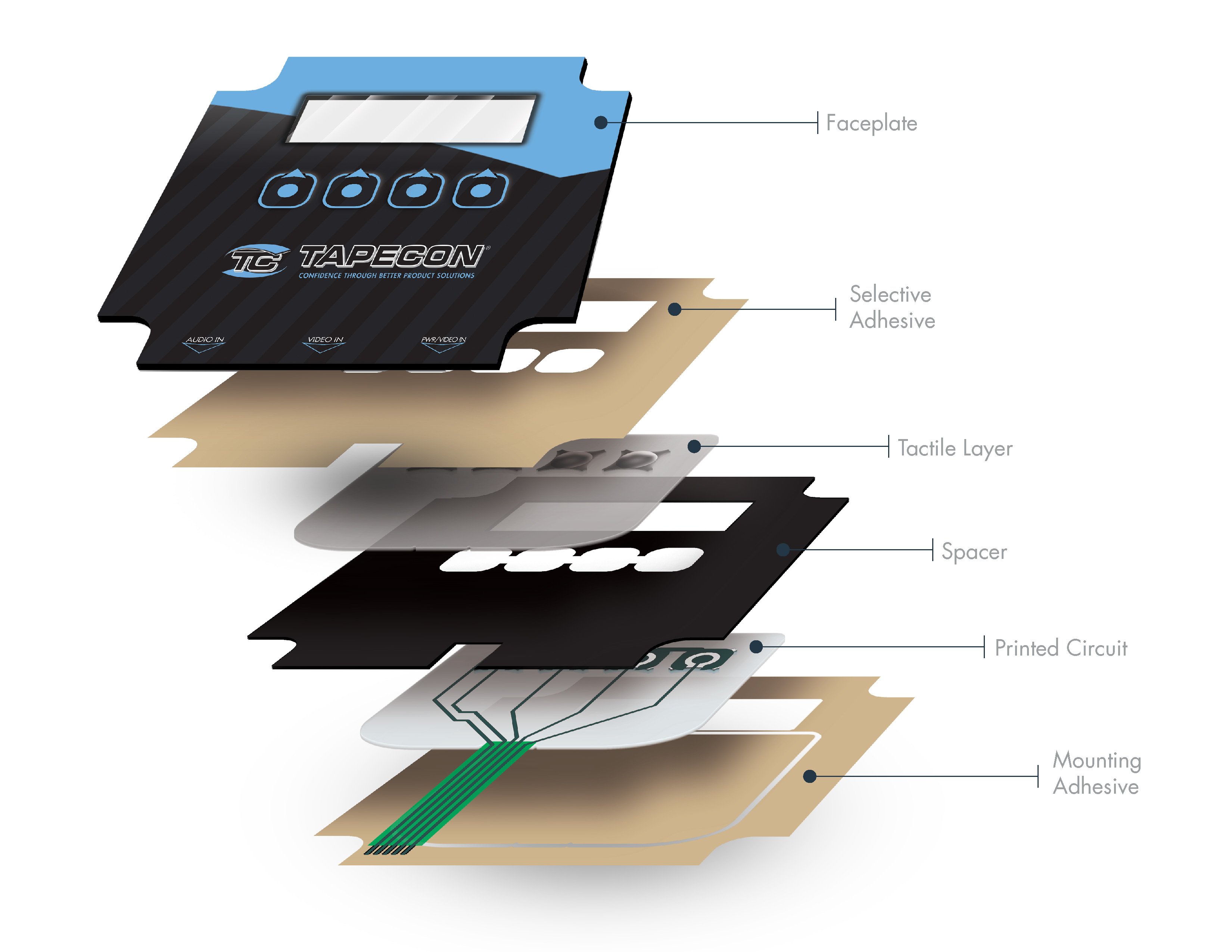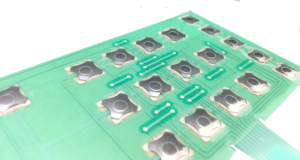Comprehending the Functionality of Membrane Switches for Customer User Interface Devices
The performance of membrane changes represents a substantial development in customer interface layout, combining performance with aesthetic flexibility. As sectors increasingly prioritize individual experience, understanding the nuances of membrane layer switch innovation comes to be vital.
What Are Membrane Buttons?
Membrane buttons are ingenious interface tools that assist in customer communication with digital devices. These functional components include numerous layers, consisting of a visuals overlay, spacer, and a published circuit layer. The layout enables a seamless integration into different digital tools, improving both the aesthetic and useful aspects of user interfaces.
Membrane buttons are typically utilized in a large variety of applications, from house devices to industrial machinery and medical tools. Their building normally includes a slim account, making them a suitable selection for compact designs. The responsive feedback supplied by these buttons can be engineered to satisfy specific individual preferences, making certain effective interaction in between the user and the gadget.
Longevity is another significant benefit of membrane buttons, as they are resistant to dirt, dampness, and chemicals, which enhances their lifespan sought after atmospheres. In addition, these buttons can be customized in terms of form, dimension, and graphic style, permitting for branding and user-specific features. On the whole, membrane layer switches over represent a functional service for enhancing individual experience in electronic gadgets, incorporating capability with aesthetic appeal in a reliable fashion.
How Membrane Layer Switches Over Work
Operating on a straightforward concept, membrane layer switches over make use of a split building and construction to register customer input successfully. Each button includes numerous layers, consisting of a published circuit layer, a spacer layer, and a top graphic layer, which are designed to function with each other effortlessly. When a user presses the leading layer, it compresses the spacer layer, bringing the conductive components of the circuit layer into contact with each other.
This get in touch with creates a closed circuit, signifying the gadget to carry out a specific feature. The design enables various setups, including responsive feedback, which can enhance the individual experience by supplying a physical sensation upon activation. The materials utilized in membrane buttons often consist of adaptable substratums, such as polyester or polycarbonate, which make certain durability and strength versus deterioration.

Trick Advantages of Membrane Layer Switches

Another substantial benefit is their density. Membrane buttons are thin and light-weight, which enables producers to conserve space in their tools without compromising functionality. This attribute is particularly useful in applications where weight and quantity are essential considerations.
Furthermore, membrane layer switches are resistant to dust, wetness, and chemicals, boosting their longevity. This durability extends their life expectancy and decreases the demand for frequent replacements, resulting in price financial savings with time.
Additionally, the responsive responses given by membrane layer switches can be optimized to improve user interaction. They can include functions such as raised switches or distinct clicks, improving usability and customer experience.
Applications Across Industries
Interface devices making use of membrane layer buttons prevail in a broad variety of sectors, showcasing their flexibility and functionality. Membrane Switch. In the medical field, membrane layer switches are essential to devices such as analysis equipment and client monitoring systems, where their longevity and ease of cleansing are essential for preserving health standards. In a similar way, in the automobile market, these switches are employed in dashboard controls and infotainment systems, providing a sleek and contemporary user interface for users.
Additionally, the customer electronic devices industry gain from membrane buttons in devices and portable gadgets, where compact design and straightforward user interfaces why not try these out enhance user experience. Industrial applications likewise utilize membrane changes for control panels in equipment and automation systems, highlighting their effectiveness and resistance to rough settings.
In the aerospace and defense markets, membrane layer switches are used in cabin controls and equipment, where reliability and efficiency under extreme problems are vital. In addition, the video gaming market significantly incorporates membrane switches in controllers and game equipments, contributing to an appealing user experience. In general, the versatility of membrane layer switches over allows their widespread usage across many industries, underscoring their value in contemporary individual interface design.
Future Trends in Membrane Layer Switch Innovation

In addition, making use of advanced materials, such as polycarbonate and polyester films, is anticipated to increase, providing improved toughness and resistance to environmental home stressors. These materials add to the overall long life of membrane layer buttons, making them ideal for harsher industrial applications.
Additionally, the consolidation of smart innovation, including IoT connection, will make it possible for membrane layer buttons to interact with various other devices and systems, facilitating a more interactive customer experience. This trend lines up with the expanding need for smart devices throughout different sectors, from healthcare to customer electronic devices.
Last but not least, modification choices are prepared for to broaden, enabling makers to develop bespoke solutions tailored to specific customer needs and choices. These advancements will position membrane layer switches as essential components in the evolution of interface technology.
Conclusion
In verdict, membrane switches over represent a critical improvement in individual interface modern technology, supplying a reputable and flexible solution for diverse electronic applications. As advancements in material here are the findings scientific research and touch picking up innovations continue, the performance and applicability of membrane buttons are anticipated to broaden, enhancing their significance in contemporary electronic gadgets.